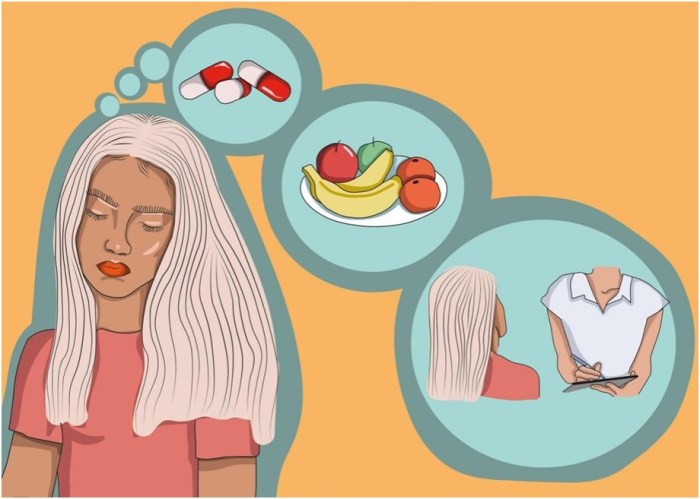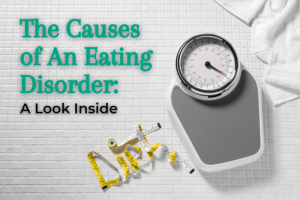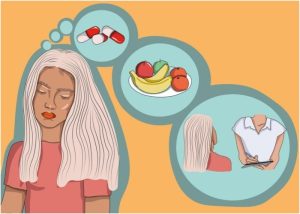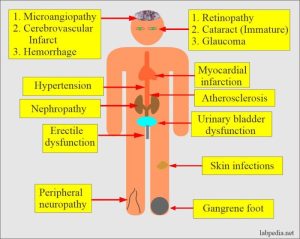
Step into the world of eating disorder therapy options where we unravel the maze of treatments with a touch of flair and expertise.
From cognitive-behavioral therapy to holistic approaches, get ready to explore the diverse landscape of options available for those struggling with eating disorders.
Types of Eating Disorder Therapies
Eating disorder therapies are essential in helping individuals overcome their struggles with food and body image. There are several therapy options available, each with its own approach and focus on treating eating disorders. Let’s explore some of the most common types of therapies used:
Cognitive-Behavioral Therapy (CBT)
Cognitive-Behavioral Therapy (CBT) is a widely used therapeutic approach for eating disorders. It focuses on identifying and changing negative thought patterns and behaviors related to food, body image, and weight. By challenging distorted thinking and promoting healthier coping strategies, CBT helps individuals develop a more positive relationship with food and their bodies.
Family-Based Therapy
Family-Based Therapy, also known as the Maudsley Method, is particularly effective for adolescents with eating disorders. This therapy involves the entire family in the treatment process, with the goal of restoring the individual’s weight and normalizing eating patterns. Family-Based Therapy emphasizes parental support and involvement to help the individual overcome their eating disorder behaviors.
Interpersonal Therapy
Interpersonal Therapy focuses on improving communication and relationships to address underlying emotional issues that may contribute to the development of an eating disorder. This therapy helps individuals develop healthier ways of relating to others and coping with emotions, reducing the need to turn to disordered eating behaviors as a means of control or avoidance.
Nutrition Therapy
Nutrition Therapy plays a crucial role in the treatment of eating disorders, working hand in hand with other therapeutic approaches. A registered dietitian helps individuals establish a balanced and healthy relationship with food, guiding them in making nutritious choices and addressing any fears or anxieties related to eating. Nutrition therapy aims to restore physical health and support overall recovery from the eating disorder.
Inpatient vs. Outpatient Treatment
When it comes to treating eating disorders, there are two main options: inpatient and outpatient treatment. Each type of treatment offers its own set of benefits and drawbacks, and the choice between the two often depends on the severity of the eating disorder and the individual’s specific needs.
Inpatient Treatment
Inpatient treatment involves round-the-clock care in a specialized facility where individuals stay for a period of time to receive intensive therapy and medical support. This type of treatment is usually recommended for individuals with severe eating disorders who require constant monitoring and intervention. Inpatient treatment provides a structured environment where patients can focus solely on their recovery without the distractions and triggers of everyday life.
Outpatient Treatment
Outpatient treatment, on the other hand, allows individuals to receive therapy and support while continuing to live at home and maintain their daily routines. This type of treatment is more flexible and can be suitable for individuals with milder forms of eating disorders or those who have completed inpatient treatment and are transitioning back to their normal lives. Outpatient treatment typically involves regular therapy sessions, nutritional counseling, and medical monitoring.
Benefits and Drawbacks
- Benefits of Inpatient Care:
– Provides intensive support and monitoring
– Offers a structured environment for recovery
– Removes triggers and distractions from daily life
- Drawbacks of Inpatient Care:
– Can be costly and may require time away from work or school
– Limited contact with family and friends
– Transitioning back to normal life can be challenging
- Benefits of Outpatient Care:
– Allows individuals to maintain daily routines
– More cost-effective than inpatient treatment
– Provides flexibility in scheduling therapy sessions
- Drawbacks of Outpatient Care:
– Less intensive support compared to inpatient treatment
– Requires a strong commitment to follow treatment plans
– May be challenging for individuals with severe eating disorders
Appropriate Treatment Based on Severity
The decision between inpatient and outpatient treatment often depends on the severity of the eating disorder. In general, individuals with severe or life-threatening eating disorders may benefit more from inpatient care due to the intensive support and monitoring it provides. On the other hand, individuals with less severe eating disorders may find success with outpatient treatment, as it allows them to continue their daily lives while receiving the necessary therapy and support.
Holistic Approaches to Eating Disorder Therapy
Holistic therapy is a comprehensive approach to treating eating disorders that focuses on addressing the emotional, physical, and mental aspects of the condition. By incorporating complementary therapies alongside traditional treatment methods, holistic approaches aim to promote overall well-being and healing.
Examples of Complementary Therapies
- Yoga: Yoga practices can help individuals with eating disorders develop a positive relationship with their bodies, reduce stress, and increase self-awareness.
- Art Therapy: Engaging in creative expression through art can be therapeutic and provide a non-verbal outlet for emotions related to the eating disorder.
- Mindfulness Practices: Mindfulness techniques can help individuals cultivate awareness of their thoughts and feelings without judgment, promoting self-compassion and reducing negative self-talk.
Benefits of Holistic Approaches
Holistic approaches to eating disorder therapy offer a range of benefits by addressing the individual’s needs on multiple levels:
- Emotional Healing: Complementary therapies can help individuals process and express emotions in a healthy way, reducing the need to turn to disordered eating behaviors.
- Physical Well-being: Practices like yoga and mindfulness can improve body image, enhance physical health, and promote a sense of balance and harmony.
- Mental Health Support: Holistic approaches can help individuals develop coping strategies, improve self-esteem, and cultivate a positive mindset towards recovery.
Technology in Eating Disorder Therapy

Technology plays a crucial role in supporting individuals undergoing eating disorder therapy, providing innovative solutions to enhance treatment outcomes and provide additional support. Here, we will explore the various ways technology is being used in eating disorder therapy.
Mobile Apps for Tracking and Support
Mobile apps have become valuable tools in eating disorder recovery, offering features such as meal tracking, mood monitoring, and coping strategies. These apps provide a convenient way for individuals to track their progress, access resources, and connect with a supportive community.
Virtual Therapy Sessions for Accessibility
Virtual therapy sessions have made eating disorder treatment more accessible to individuals who may have difficulty attending in-person appointments. Through video conferencing platforms, individuals can participate in therapy sessions from the comfort of their own homes, reducing barriers to care.
Online Support Groups for Community
Online support groups create a sense of community and connection for individuals undergoing eating disorder therapy. These groups provide a safe space for sharing experiences, receiving encouragement, and gaining insight from others who are on a similar journey towards recovery.
Benefits and Challenges of Integrating Technology
Integrating technology into eating disorder treatment offers numerous benefits, such as increased access to resources, enhanced monitoring of progress, and improved communication with healthcare providers. However, challenges may arise, including concerns about data privacy, potential reliance on technology, and the need for personalized, human-centered care alongside technological interventions.
Cosmetic Surgery
Cosmetic surgery is sometimes considered by individuals with a history of eating disorders as a way to alter their appearance in order to improve their body image. This can stem from a desire to address perceived flaws or imperfections that may be magnified by the distorted body image associated with eating disorders.
Relationship between Body Image Issues and Cosmetic Surgery
- Individuals with eating disorders may struggle with body dysmorphic disorder, leading them to fixate on perceived physical flaws.
- Cosmetic surgery is seen as a way to correct these flaws and enhance self-esteem by altering the appearance of specific body parts.
- However, it is important to address underlying psychological issues before considering cosmetic procedures to ensure a healthy mindset.
Potential Risks and Benefits of Cosmetic Surgery
- Benefits may include improved self-confidence and body image, leading to a more positive outlook on life.
- Risks can involve complications during surgery, dissatisfaction with results, and exacerbation of underlying body image issues.
- It is crucial for individuals with a history of eating disorders to weigh these factors carefully before deciding to undergo cosmetic procedures.
Ethical Considerations in Cosmetic Surgery for Eating Disorder Recovery
- There are ethical concerns surrounding the decision to undergo cosmetic surgery while in recovery from an eating disorder.
- Some argue that it may perpetuate the idea that changing one’s appearance is the solution to self-worth issues.
- Others believe that if the individual has addressed their psychological issues and has realistic expectations, cosmetic surgery can be a valid choice.
Foot Health
Eating disorders can have a significant impact on foot health, especially in cases of malnutrition. When the body is not receiving adequate nutrients, it can lead to various foot problems that can affect mobility and overall well-being. It is essential to address these issues and take steps to maintain good foot health during eating disorder recovery.
Impact of Eating Disorders on Foot Health
- Malnutrition can result in weakened bones and muscles in the feet, leading to conditions such as stress fractures and plantar fasciitis.
- Poor circulation due to malnutrition can contribute to cold feet, numbness, and an increased risk of infections.
- Dehydration can cause dry, cracked skin on the feet, making them more susceptible to infections and other issues.
Common Foot Problems Associated with Eating Disorders
- Foot pain and swelling
- Brittle toenails
- Calluses and corns
- Bunions and hammertoes
- Athlete’s foot and fungal infections
Recommendations for Maintaining Good Foot Health During Eating Disorder Recovery
- Ensure proper nutrition with a balanced diet rich in essential nutrients to support foot health.
- Stay hydrated to prevent dry skin and promote circulation in the feet.
- Wear comfortable and supportive footwear to reduce pressure on the feet and prevent injuries.
- Practice good foot hygiene, including regular washing and moisturizing to prevent infections.
- Monitor foot health closely and seek professional help if any issues arise to prevent complications.
Heart Disease
Eating disorders can have severe implications on physical health, with one of the most concerning risks being the development of heart disease. The behaviors associated with eating disorders, such as extreme restriction of food intake, binge eating, and purging, can significantly impact cardiovascular health. It is crucial to understand the link between eating disorders and heart disease to provide comprehensive care to individuals struggling with these conditions.
Cardiovascular Risks of Eating Disorders
- Individuals with anorexia nervosa may experience bradycardia, a slowed heart rate, as a result of malnutrition and electrolyte imbalances.
- Binge eating and purging behaviors in bulimia nervosa can lead to electrolyte imbalances, which can affect the heart’s rhythm and function.
- Severe dehydration from purging behaviors can strain the heart and impair its ability to function properly.
Importance of Cardiac Monitoring
Regular cardiac monitoring is essential in the treatment of individuals with eating disorders to assess and manage the potential cardiovascular complications. Healthcare providers need to closely monitor heart function, blood pressure, and electrolyte levels to address any abnormalities promptly. Collaborative care between medical professionals, therapists, and nutritionists is crucial in ensuring comprehensive treatment that addresses both the psychological and physical aspects of eating disorders.
Treatment and Prevention Strategies
- Implementing a structured meal plan to ensure adequate nutrition and prevent further damage to the heart.
- Providing psychotherapy and counseling to address the underlying psychological factors contributing to the eating disorder.
- Educating individuals on the importance of maintaining a healthy relationship with food and their bodies to prevent relapse and promote long-term heart health.
Health Diabetes
Eating disorders can have a significant impact on an individual’s physical health, including the development of diabetes. The relationship between eating disorders and diabetes is complex and requires careful management to ensure the overall well-being of the individual.
Impact of Disordered Eating on Blood Sugar Levels
Disordered eating patterns, such as restricting food intake or binge eating followed by purging, can disrupt blood sugar levels and insulin regulation in the body. This can lead to fluctuations in blood glucose levels, which may increase the risk of developing diabetes or exacerbate existing diabetes in individuals.
- Restricting food intake can lead to low blood sugar levels, causing weakness, dizziness, and fatigue.
- Binge eating followed by purging can cause spikes and crashes in blood sugar levels, putting strain on the body’s insulin response.
Managing Diabetes in Individuals with Eating Disorders
It is crucial for individuals undergoing treatment for eating disorders to have a comprehensive plan in place to manage diabetes effectively. Here are some recommendations:
- Regular monitoring of blood glucose levels to ensure they are within a healthy range.
- Following a balanced meal plan that takes into account both diabetes management and eating disorder recovery goals.
- Working closely with a healthcare team that includes professionals specializing in eating disorders and diabetes management.
- Engaging in regular physical activity to help regulate blood sugar levels and improve overall health.
- Seeking psychological support to address the emotional and mental health aspects of both eating disorders and diabetes.
Eating Disorders

Eating disorders are complex mental health conditions that can have serious physical and emotional consequences. They often involve disturbances in eating behaviors, body image, and weight control.
Types of Eating Disorders and Their Unique Challenges in Therapy
- Anorexia Nervosa: Individuals with anorexia typically have an intense fear of gaining weight, leading to severe calorie restriction and excessive exercise. Therapy for anorexia often focuses on addressing distorted body image and establishing healthy eating patterns.
- Bulimia Nervosa: People with bulimia engage in episodes of binge eating followed by purging behaviors such as self-induced vomiting or misuse of laxatives. Therapy for bulimia aims to break the cycle of binge-purge behaviors and address underlying emotional issues.
- Binge Eating Disorder: Those with binge eating disorder experience recurrent episodes of uncontrollable eating without purging. Therapy for binge eating disorder may involve strategies to regulate eating patterns and address emotional triggers for overeating.
Prevalence of Eating Disorders and Importance of Early Intervention
Eating disorders affect people of all ages, genders, and backgrounds, with a significant impact on physical health and quality of life. Early intervention is crucial in treating eating disorders to prevent long-term complications and improve recovery outcomes.
Success Stories and Effective Treatment Approaches for Eating Disorders
One success story involves a young woman who sought treatment for anorexia nervosa and participated in a comprehensive therapy program that included individual counseling, nutritional support, and family therapy. Through consistent treatment and support, she was able to overcome her eating disorder and rebuild a healthy relationship with food.
Another effective treatment approach for eating disorders is cognitive-behavioral therapy (CBT), which helps individuals challenge and change negative thoughts and behaviors related to food and body image. CBT has shown to be beneficial in reducing eating disorder symptoms and improving overall well-being.
Closing Notes
As we wrap up our journey through the realm of eating disorder therapy options, remember that the path to recovery is unique for each individual, but with the right support and treatment, healing is possible.
FAQ Overview
How do I know which eating disorder therapy option is right for me?
The best way to determine the right therapy option is to consult with a healthcare professional who can assess your specific needs and recommend the most suitable treatment.
Are there any alternative therapies besides the ones mentioned in the Artikel?
Yes, there are other alternative therapies such as equine therapy, dance therapy, and music therapy that some individuals find beneficial in treating eating disorders.
Can technology truly enhance the effectiveness of eating disorder therapy?
Technology can be a valuable tool in supporting individuals undergoing therapy, providing access to resources, tracking progress, and offering virtual support when needed.





